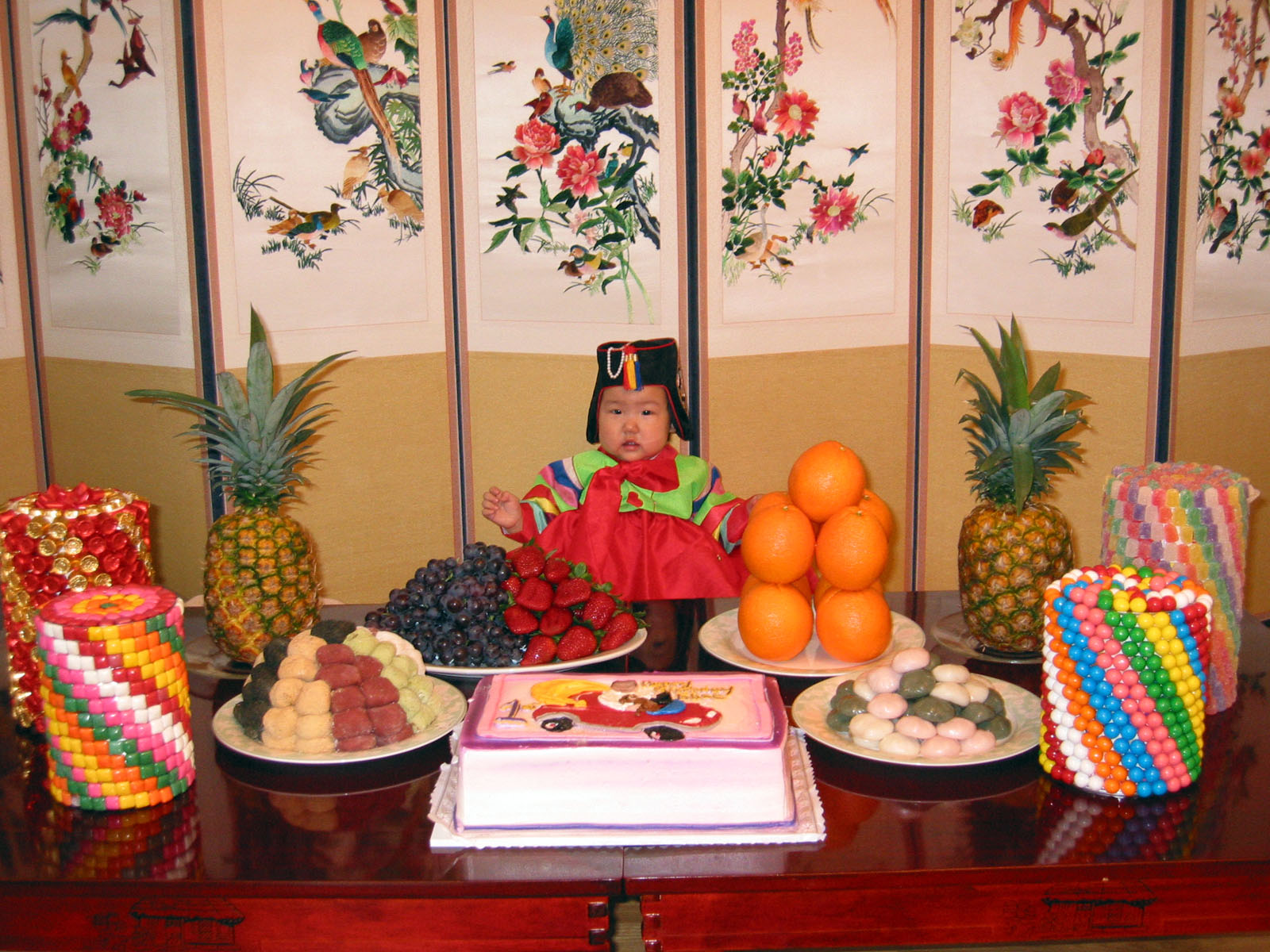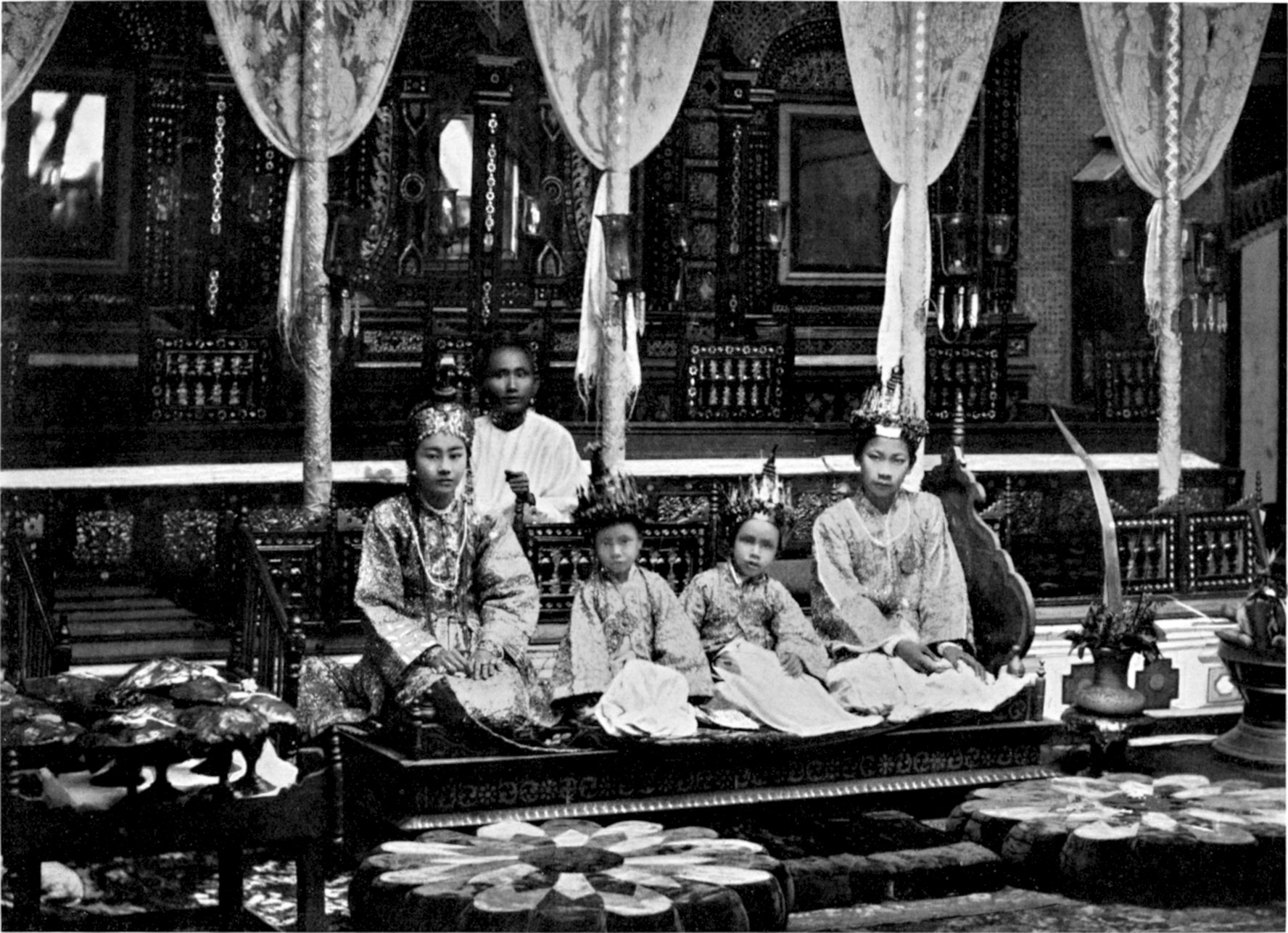|
Korean Birthday Celebrations
Korean birthday celebrations or Dol are one of the important facets of Korean culture. When a person reaches an important age in his or her life, Koreans have unique celebrations to mark these milestones. Dol means it has been 365 days since the baby's birth. ''Dol'' (돌) ''Dol'' (''doljanchi'', or ''tol'') is probably one of the best-known of the Korean birthday celebrations. ''Dol'' is celebrated for the first year of a child. The first part of the ''dol'' celebration is prayer. Traditionally, Koreans would pray to two of the many Korean gods: ''Sanshin'' (the mountain god) and ''Samshin'' (the birth goddess). Koreans would prepare the praying table with specific foods: a bowl of steamed white rice, seaweed soup (miyeok-guk) and a bowl of pure water. Layered red bean rice cakes (''samshin siru'') were placed next to the prayer table. The rice cakes were not shared outside the family; it was believed that sharing this particular item with people outside the family would bring ... [...More Info...] [...Related Items...] OR: [Wikipedia] [Google] [Baidu] |
Culture Of Korea
The traditional culture of Korea is the shared cultural and historical heritage of Korea and southern Manchuria before the division of Korea in 1945. Manchuria refers to the ancient geographical and historical region in Northeast Asia, including countries like China and Russia. Since the mid-20th century, Korea has been split between the North Korean and South Korean states, resulting in a number of cultural differences that can be observed even today. the practice of Confucianism and Korean shamanism is deeply rooted in Korean culture. Clothing The traditional dress known as ''hanbok'' (한복, 韓服) (known as ''joseonot'' ��선옷in the DPRK). The ''hanbok'' consists of a shirt (''jeogori'') and a skirt (''chima''). According to social status, Koreans used to dress differently, making clothing an important mark of social rank. Costumes were worn by the ruling class and the royal family. These upper classes also used jewelry to distance themselves from the ordinar ... [...More Info...] [...Related Items...] OR: [Wikipedia] [Google] [Baidu] |
Korean Calendar
The traditional Korean calendar or Dangun calendar () is a lunisolar calendar. Dates are calculated from Korea's meridian (135th meridian east in modern time for South Korea), and observances and festivals are based in Korean culture. Koreans mostly use the Gregorian calendar, which was officially adopted in 1896. However, traditional holidays and age-reckoning for older generations are still based on the old calendar. The biggest festivals in Korea today, which are also national holidays, are Seollal, the first day of the traditional Korean New Year, and Chuseok its harvest moon festival. Other important festivals include Daeboreum also referred to as ''Boreumdaal'' (the first full moon), Dano (spring festival) and Samjinnal (spring-opening festival). Other minor festivals include Yudu (summer festival), and Chilseok (monsoon festival). History Like most traditional calendars of other East Asian countries, the Korean Calendar is mainly derived from the Chinese calendar. Th ... [...More Info...] [...Related Items...] OR: [Wikipedia] [Google] [Baidu] |
Korean Cuisine
Korean cuisine has evolved through centuries of social and political change. Originating from ancient agricultural and nomadic traditions in Korea and southern Manchuria, Korean cuisine reflects a complex interaction of the natural environment and different cultural trends. Korean cuisine is largely based on rice, vegetables, seafood and (at least in South Korea) meats. Dairy is largely absent from the traditional Korean diet. Traditional Korean meals are named for the number of side dishes (반찬; 飯饌; ''banchan'') that accompany steam-cooked short-grain rice. Kimchi is served at nearly every meal. Commonly used ingredients include sesame oil, ''doenjang'' (fermented bean paste), soy sauce, salt, garlic, ginger, ''gochugaru'' (pepper flakes), '' gochujang'' (fermented red chili paste) and napa cabbage. Ingredients and dishes vary by province. Many regional dishes have become national, and dishes that were once regional have proliferated in different variations ... [...More Info...] [...Related Items...] OR: [Wikipedia] [Google] [Baidu] |
Rites Of Passage
A rite of passage is a ceremony or ritual of the passage which occurs when an individual leaves one group to enter another. It involves a significant change of status in society. In cultural anthropology the term is the Anglicisation of ''rite de passage'', a French term innovated by the ethnographer Arnold van Gennep in his work ''Les rites de passage'', ''The Rites of Passage''. The term is now fully adopted into anthropology as well as into the literature and popular cultures of many modern languages. Original conception In English, Van Gennep's first sentence of his first chapter begins: "Each larger society contains within it several distinctly separate groupings. ... In addition, all these groups break down into still smaller societies in subgroups." The population of a society belongs to multiple groups, some more important to the individual than others. Van Gennep uses the metaphor, "as a kind of house divided into rooms and corridors." A passage occurs when an indiv ... [...More Info...] [...Related Items...] OR: [Wikipedia] [Google] [Baidu] |
Twelve Auspicious Rites
The Twelve Auspicious Rites ( my, လောကီမင်္ဂလာဆယ့်နှစ်ပါး, , and ) are a series of worldly rites of passage recognized in traditional Burmese culture, particularly by the Bamar. These are distinct from the Thirty-eight Buddhist Beatitudes described in the Maṅgala Sutta. In modern times, only four or five of these rites — the naming, first feeding, ear-boring, shinbyu, and wedding rites — are commonly practiced in Myanmar, especially in urban cities. In pre-colonial Burma, Brahmins typically consecrated or led these rites. Today, masters of ceremony who specialize in abhisheka rituals, called ''beiktheik saya'' (ဘိသိက်ဆရာ), consecrate these rites. ''Beiktheik saya'' derive their skills from four Vedic scriptures, namely Sāmaveda, Yajurveda, Atharvaveda, and Rigveda, in addition to Pali scriptures. List of rites # () – the successful delivery of a child # () – the taking of refuge in the Three Jewels, w ... [...More Info...] [...Related Items...] OR: [Wikipedia] [Google] [Baidu] |
East Asian Age Reckoning
Countries in the East Asian cultural sphere (China, Korea, Japan, Vietnam, and their diasporas) have traditionally used specific methods of reckoning a person's numerical age based not on their birthday but the calendar year, and what age one is considered at birth. These methods currently see only limited use in certain contexts and areas, mainly in South Korea and Taiwan. A person's age will always be one or two years greater than his or her age in the international norm. In the context of South Korea, this reckoning is often referred to as Korean age, but in 2022, the government of South Korea announced plans to switch from this Korean age system to the system used by most other countries in the world. In traditional China, where the system originated millennia ago, people were considered to be ''one "year old"'' at birth (one ''sui'' 嵗/岁), and on New Year's Day of the lunar calendar, another year was added to their age. In other words, age was counted with ordinal n ... [...More Info...] [...Related Items...] OR: [Wikipedia] [Google] [Baidu] |





